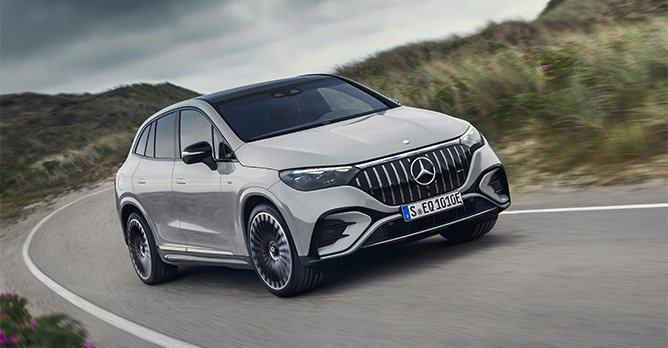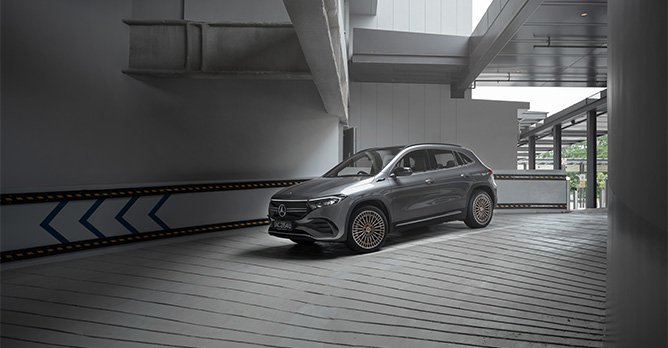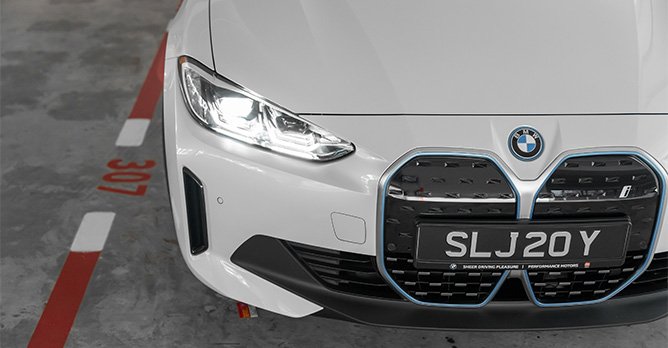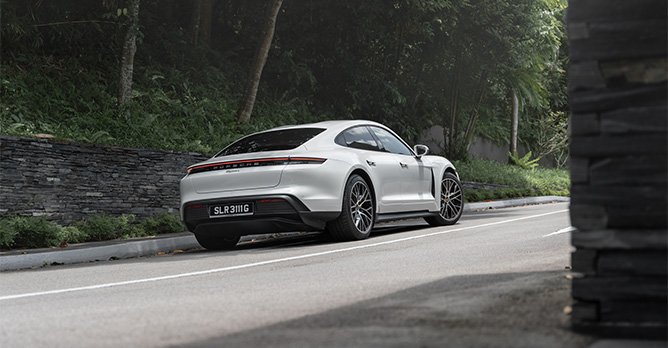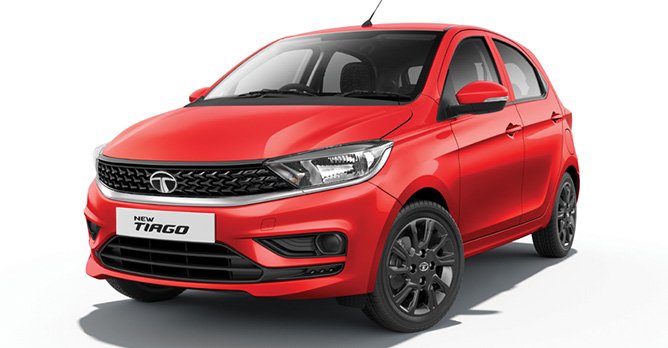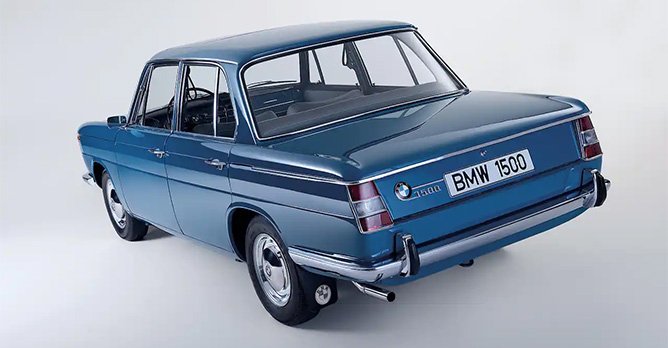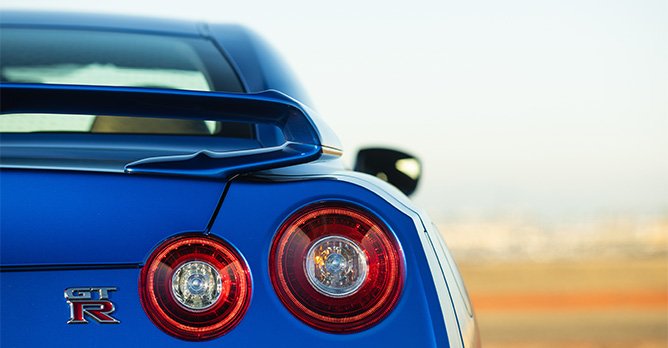Nameplates are getting confused and lost in EV-translation. So are we
15 Nov 2022|9,777 views
Is a name just a name? Does it mean something more? Should it mean something more?
For cars, the obvious answer appears to be yes.
The numbers '3' and '5', and the letters 'E' and 'S' shouldn't mean anything on their own. Meanwhile, golf and polo are technically just sports; 'supra' is a prefix in the English language, meaning 'above' or 'beyond'. Mention these to anyone just mildly connected to the automotive world, however, and their interest is sure to be piqued.
Yet this is exactly also why we've been confused of late.
As the combustion engine rapidly falls out of favour, carmakers are scrambling to introduce new machines that they hope we will love, and that will also keep them at the top of the game. With that, this universe of names we've always known also appears to be on the cusp of upheaval.
The new norm-enclature of EVs
To illustrate our point, we want to start by shouting out Audi's stellar local EV lineup before we go any further.
The e-tron and e-tron Sportback (plus the latter's performance variant, the e-tron S Sportback) have been formidable as the first faces of what electrification looks like at Audi. Of course, we've also gotten the stunning e-tron GT. Then there's also Audi's first full-fat performance EV, the flagship RS e-tron GT.
With that - and to show how mouthy it can feel when discussing the brand with a friend - we've already used 'e-tron' five times (now six).
But just last week, yet another spanner was thrown into the mix. The e-tron and e-tron S will soon disappear, and instead, be known as the Q8 e-tron and SQ8 e-tron moving forward. No - these are technically (mechanically) not electric equivalents of the Q8 and SQ8.
Go further south in Germany. The EQE is Merc's electric executive sedan - officially 'from Mercedes-EQ', by the way, and not simply Mercedes-Benz. The taller, two-boxed version of it that was revealed just recently? That's the EQE SUV. But wait… the retooled GLC- and GLA-Classes are just called the EQC and EQA.
When electric compact sedans from Merc in both of those segments are unveiled, will they be known as the 'EQC Sedan' and 'EQA Sedan' then?
And less you think Bavaria has completely spared us the confusion, the i3 is back - but only in China, and as an all-electric version of the 3 Series. It's anyone's guess if that nomenclature eventually impacts international markets too. Confused already? You're probably not alone.
We have our own strong bets as to why this disarrayed naming has arisen. And to arrive at this point, we've tried looking at things from the perspective of our beloved carmakers.
Why…?
Coherency and consistency are both key when launching a new line of cars (in fact, the same principle can be applied to any sort of product). Beyond just tying different models together with a Singleframe grille, or indeed a twin kidney one, common threads need to be woven across the badges on their trunks too.
To a large extent, it works. Think BMW and numbers instinctively pop into your head; think Merc, and the same goes for certain letters. Think Audi, and it's a mixture of both. With 'e-tron', 'EQ' and the singular 'i', the same results are slowly being cultivated.
This may all be dandy and well for identifying what's made by who in conversation. Over time, recognition for these sub-brands should grow too. But the entire business becomes more muddied in the attempt to meld them with the goal of familiarity.
Nameplates like the 3 Series and E-Class have blazed a glorious path through the turn of the century to arguably reach greater heights with each new generation. In fact, if it weren't for the rapid switch to EVs by the mid 2030s, nothing would diminish the evergreen sheen of these models.
Yet here we are. What's a company to do if it has to go electric, but doesn't want to give up its most legendary nameplates? The answer lies in affixing. That's the reason why we have names now like the EQE ('EQ' + 'E-Class'), and the i4 ('i' + '4 Series'). Even 'brand new' names on brand new models such as the Q4 e-tron and iX harken back to pre-existing ones.
The effort - to reference and associate these new electric models with those of the brand that customers have already developed a relationship with - is clear. In the process, however, some clarity in differentiating between the sudden swathe of new models appears to have been lost.
Changing names while changing lanes
As if the new nomenclature wasn't sufficiently headache-inducing, yet another threat exists: The loss of historic nameplates.
Even though it appears that we're headed down the path of full electrification, the world's largest brands, including Volkswagen, Toyota, Mercedes-Benz and BMW, are still holding out against hard deadlines for the production of ICE vehicles.
That's led to the co-existence of models today such as the Volkswagen ID.3 and Golf; the Mercedes-Benz EQS and S-Class; the Lexus RZ and RX, and of course, the BMW i4 and 4 Series Gran Coupe. All of them are arguably foils of each other, although the only true 'twins' you'll find on this list are the last pairing.
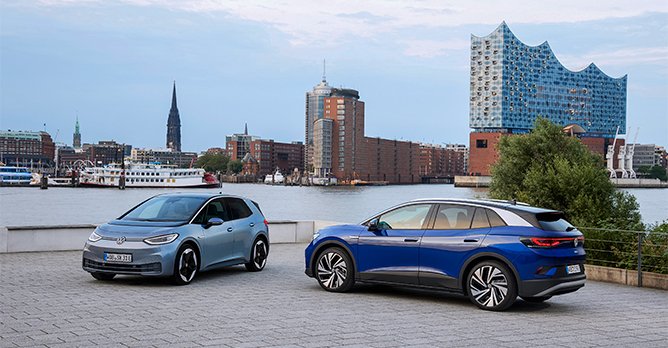
 When infrastructure catches up, the scales should be tipped in favour of the 'iD's, 'EQ's, 'i's, 'e-tron's... It doesn't take a soothsayer to foretell what's eventually going to happen. If the approximate distribution of sales between an ICE model and its EV twin now stands at around 90:10, expect the ratio to easily hit an equal 50:50 in about 10 to 15 years. When infrastructure around the world has properly caught up, that balance could tip even further - in favour of the 'iD's, 'EQ's, and 'i's.
When infrastructure catches up, the scales should be tipped in favour of the 'iD's, 'EQ's, 'i's, 'e-tron's... It doesn't take a soothsayer to foretell what's eventually going to happen. If the approximate distribution of sales between an ICE model and its EV twin now stands at around 90:10, expect the ratio to easily hit an equal 50:50 in about 10 to 15 years. When infrastructure around the world has properly caught up, that balance could tip even further - in favour of the 'iD's, 'EQ's, and 'i's.
What will happen to some of our most beloved name plates then?
Since it's actually going full-electric, Audi may perhaps not be caught in this pickle. A theoretical A4 e-tron could just become the A4 once again as soon as the company flips the switch entirely in 2033.
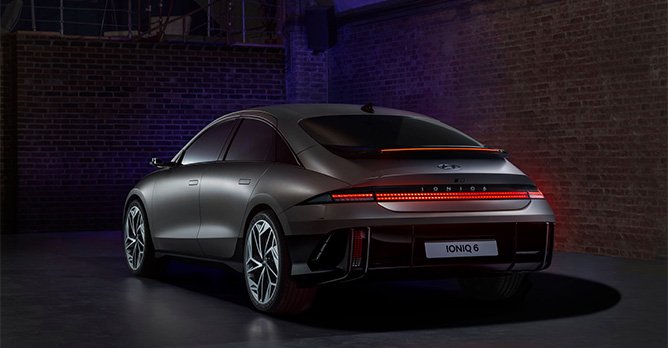
 Without having to string along its past directly, HMG has boldly leapt into the EV age (IONIQ 6 pictured) Likewise, one will note that marques without super-strength legacy nameplates will not face the same problem.
Without having to string along its past directly, HMG has boldly leapt into the EV age (IONIQ 6 pictured) Likewise, one will note that marques without super-strength legacy nameplates will not face the same problem.
Hyundai Motor Group's shorter car-making history has helped it charge forward without worrying too much about having to string along its past. In fact, given its more obscure history, it's now become the dark horse of the EV race. That opportunity is now being weaponised: To win over new fans as it digs through and reintroduces less-celebrated references from its past.
But what about the Golf? Or the E-Class? Or the 3 Series? Even if the 'i3' moniker is causing some confusion in the path towards electric BMWs, more pressing in the house of Munich is the risk of discontinuity. To point to something that's already in existence, 'i7' just doesn't have the same ring as '7 Series'; nor does 'EQE' have the same ring as 'E-Class'.
The business of introducing car names
Undeniably, car naming isn't easy even if the best justifications for a certain moniker can be mustered.
The effort can surely pay off if the stars align. Take the Porsche Taycan for example, whose rollout till today, we'd argue, has been one of the best-executed in the industry thus far.
Entire teams and extensive periods of time were invested into crafting its name, and despite its (perhaps unnecessarily) complex etymology. Serendipitously, the end result of 'Taycan' has blended seamlessly into the rest of the lineup because of how it reads and sounds. There are flashes of pre-existing models within its name, including the Cayenne, Cayman, and Macan.
But best-case-scenarios like this are rare. An oft-cited example of how car-naming can go wrong despite a manufacturer's best efforts is what should have been the Tata Zica. The hatch quickly became the Tata Tiago when its launch happened to collide with the global outbreak of the Zika virus in 2016.
As such, modifying a letter or a number as BMW and Merc are doing may not just be sensible from a branding perspective. Rather, it's also less risky.
Furthermore, this isn't the first time that name changes have come into place too. Since the Germans have been the key source of inspiration for this confusion, it'd be remiss not to note that every single model we think of as immutable today had its own humble beginnings
Post World War II, it took a few decades for BMW's elegant and luxurious sedans to be assigned single-digit odd numbers. The 3 Series was introduced after the 02 Series in the mid-1970s.
The first C-Class officially came into being even later - only in the mid-1990s - when it succeeded the 190 Series cars.
Names have also changed within BMW and Merc's lineups with a little wave of their wands in more recent examples.
At some point over the last ten years, the GL-Class and M-Class were suddenly the GLS-Class and GLE-Class respectively. The 3 Series Coupe became the 4 Series.
Back in 2013-2014, the world also had a bit of adapting to do as we learned to associate the same digit - '2' - to a coupe and an MPV in BMW's universe (there's since been a compact sedan/four-door coupe thrown in somewhere too).
Contrarily, certain nameplates never go out of style.
The Quattro, once a standalone model, is now a badge on all-wheel drive Audis. It also appears that BMW is digging back into its history. Press releases have referred to its impending generation of all new bespoke EVs as the 'Neue Klasse' - exactly the designation given to its legendary post-war sedans and coupes from the 1960s to 1970s.
Does this all just require some adjustment on our parts?
All of this circles us back to the very first point.
Numbers (and names) on their own mean nothing, and are in fact just as soulless - if not more so - than alphabets randomly combined together. They fail to evoke emotion in a vacuum. We've only grown to recognise them as we do today because of the cars they’ve been attached to.
To return to the core of some of our favourite cars today, wonder grows when you're up close and in the driver's seat, bearing witness to a marvel of engineering. Everything - from the Supra to S-Class, 3 Series to GT-R - had to start somewhere. Thereafter, slowly-solidifying reverence naturally formed.
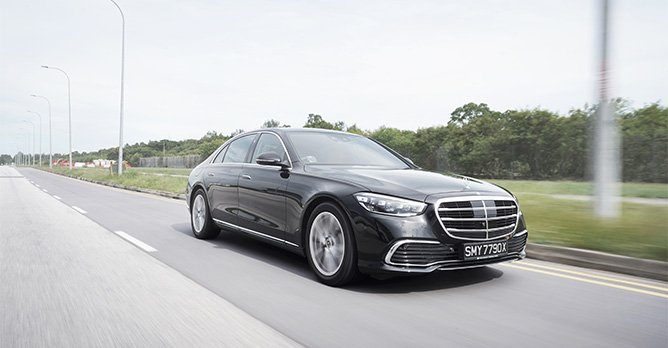
 ICE cars still deal better in superlatives currently - superlative luxury, performance, practicality... To some, the first crop of EVs from our favourite marques may not yet deliver the historical virtues so deeply and fiercely loved in their best machines. Do-it-all versatility, cossetting luxury, or full-blooded driving thrills - these are arguably qualities all found in greater quantities on long-standing ICE models still.
ICE cars still deal better in superlatives currently - superlative luxury, performance, practicality... To some, the first crop of EVs from our favourite marques may not yet deliver the historical virtues so deeply and fiercely loved in their best machines. Do-it-all versatility, cossetting luxury, or full-blooded driving thrills - these are arguably qualities all found in greater quantities on long-standing ICE models still.
But take the current period as a transitory one, replete with the unavoidable teething issues of any type of major upheaval - naming practices included. These first EVs we've gotten are undeniably remarkable as first attempts, and should only continue to improve. Then, as these new cars proliferate and grow on us, it won't be so difficult to confuse them anymore.
So that's the confusing part settled.
On the other hand, however, it remains to be seen if long-standing nameplates will be saved or fully disposed of as the switch to full-electric gets flipped. Besides, would we really take it well if a BMW without a straight-six was suddenly called an 'M3'? If we have to cry about anything, the diminishing presence of the combustion engine is infinitely more tragic.
Stomaching the loss of historic nameplates - if it happens - won't be easy. Twenty years on, however, we may very well be forced into looking back fondly on names like the 'Golf' or '3 Series' as icons of a bygone past, as we do today with cars like the Audi Quattro and BMW 2002.
A name will never be just a name. But the reality is that as the world changes, we will learn to adapt. Eventually, we will move on.
Here are some other articles that may interest you!
It's not just Kia: Why is everyone so desperate recently to announce new logos?
Cars we want to see revived before the world goes all-electric
Is the Mercedes S-Class as compelling as the all-electric EQS?
Audi's e-tron, BMW's i and Mercedes' EQ: How it started versus how it's going
For cars, the obvious answer appears to be yes.
The numbers '3' and '5', and the letters 'E' and 'S' shouldn't mean anything on their own. Meanwhile, golf and polo are technically just sports; 'supra' is a prefix in the English language, meaning 'above' or 'beyond'. Mention these to anyone just mildly connected to the automotive world, however, and their interest is sure to be piqued.
Yet this is exactly also why we've been confused of late.
As the combustion engine rapidly falls out of favour, carmakers are scrambling to introduce new machines that they hope we will love, and that will also keep them at the top of the game. With that, this universe of names we've always known also appears to be on the cusp of upheaval.
The new norm-enclature of EVs
To illustrate our point, we want to start by shouting out Audi's stellar local EV lineup before we go any further.
The e-tron and e-tron Sportback (plus the latter's performance variant, the e-tron S Sportback) have been formidable as the first faces of what electrification looks like at Audi. Of course, we've also gotten the stunning e-tron GT. Then there's also Audi's first full-fat performance EV, the flagship RS e-tron GT.
With that - and to show how mouthy it can feel when discussing the brand with a friend - we've already used 'e-tron' five times (now six).
But just last week, yet another spanner was thrown into the mix. The e-tron and e-tron S will soon disappear, and instead, be known as the Q8 e-tron and SQ8 e-tron moving forward. No - these are technically (mechanically) not electric equivalents of the Q8 and SQ8.
Go further south in Germany. The EQE is Merc's electric executive sedan - officially 'from Mercedes-EQ', by the way, and not simply Mercedes-Benz. The taller, two-boxed version of it that was revealed just recently? That's the EQE SUV. But wait… the retooled GLC- and GLA-Classes are just called the EQC and EQA.
When electric compact sedans from Merc in both of those segments are unveiled, will they be known as the 'EQC Sedan' and 'EQA Sedan' then?
And less you think Bavaria has completely spared us the confusion, the i3 is back - but only in China, and as an all-electric version of the 3 Series. It's anyone's guess if that nomenclature eventually impacts international markets too. Confused already? You're probably not alone.
We have our own strong bets as to why this disarrayed naming has arisen. And to arrive at this point, we've tried looking at things from the perspective of our beloved carmakers.
Why…?
Coherency and consistency are both key when launching a new line of cars (in fact, the same principle can be applied to any sort of product). Beyond just tying different models together with a Singleframe grille, or indeed a twin kidney one, common threads need to be woven across the badges on their trunks too.
To a large extent, it works. Think BMW and numbers instinctively pop into your head; think Merc, and the same goes for certain letters. Think Audi, and it's a mixture of both. With 'e-tron', 'EQ' and the singular 'i', the same results are slowly being cultivated.
This may all be dandy and well for identifying what's made by who in conversation. Over time, recognition for these sub-brands should grow too. But the entire business becomes more muddied in the attempt to meld them with the goal of familiarity.
Nameplates like the 3 Series and E-Class have blazed a glorious path through the turn of the century to arguably reach greater heights with each new generation. In fact, if it weren't for the rapid switch to EVs by the mid 2030s, nothing would diminish the evergreen sheen of these models.
Yet here we are. What's a company to do if it has to go electric, but doesn't want to give up its most legendary nameplates? The answer lies in affixing. That's the reason why we have names now like the EQE ('EQ' + 'E-Class'), and the i4 ('i' + '4 Series'). Even 'brand new' names on brand new models such as the Q4 e-tron and iX harken back to pre-existing ones.
The effort - to reference and associate these new electric models with those of the brand that customers have already developed a relationship with - is clear. In the process, however, some clarity in differentiating between the sudden swathe of new models appears to have been lost.
Changing names while changing lanes
As if the new nomenclature wasn't sufficiently headache-inducing, yet another threat exists: The loss of historic nameplates.
Even though it appears that we're headed down the path of full electrification, the world's largest brands, including Volkswagen, Toyota, Mercedes-Benz and BMW, are still holding out against hard deadlines for the production of ICE vehicles.
That's led to the co-existence of models today such as the Volkswagen ID.3 and Golf; the Mercedes-Benz EQS and S-Class; the Lexus RZ and RX, and of course, the BMW i4 and 4 Series Gran Coupe. All of them are arguably foils of each other, although the only true 'twins' you'll find on this list are the last pairing.

What will happen to some of our most beloved name plates then?
Since it's actually going full-electric, Audi may perhaps not be caught in this pickle. A theoretical A4 e-tron could just become the A4 once again as soon as the company flips the switch entirely in 2033.

Hyundai Motor Group's shorter car-making history has helped it charge forward without worrying too much about having to string along its past. In fact, given its more obscure history, it's now become the dark horse of the EV race. That opportunity is now being weaponised: To win over new fans as it digs through and reintroduces less-celebrated references from its past.
But what about the Golf? Or the E-Class? Or the 3 Series? Even if the 'i3' moniker is causing some confusion in the path towards electric BMWs, more pressing in the house of Munich is the risk of discontinuity. To point to something that's already in existence, 'i7' just doesn't have the same ring as '7 Series'; nor does 'EQE' have the same ring as 'E-Class'.
The business of introducing car names
Undeniably, car naming isn't easy even if the best justifications for a certain moniker can be mustered.
The effort can surely pay off if the stars align. Take the Porsche Taycan for example, whose rollout till today, we'd argue, has been one of the best-executed in the industry thus far.
Entire teams and extensive periods of time were invested into crafting its name, and despite its (perhaps unnecessarily) complex etymology. Serendipitously, the end result of 'Taycan' has blended seamlessly into the rest of the lineup because of how it reads and sounds. There are flashes of pre-existing models within its name, including the Cayenne, Cayman, and Macan.
But best-case-scenarios like this are rare. An oft-cited example of how car-naming can go wrong despite a manufacturer's best efforts is what should have been the Tata Zica. The hatch quickly became the Tata Tiago when its launch happened to collide with the global outbreak of the Zika virus in 2016.
As such, modifying a letter or a number as BMW and Merc are doing may not just be sensible from a branding perspective. Rather, it's also less risky.
Furthermore, this isn't the first time that name changes have come into place too. Since the Germans have been the key source of inspiration for this confusion, it'd be remiss not to note that every single model we think of as immutable today had its own humble beginnings
Post World War II, it took a few decades for BMW's elegant and luxurious sedans to be assigned single-digit odd numbers. The 3 Series was introduced after the 02 Series in the mid-1970s.
The first C-Class officially came into being even later - only in the mid-1990s - when it succeeded the 190 Series cars.
Names have also changed within BMW and Merc's lineups with a little wave of their wands in more recent examples.
At some point over the last ten years, the GL-Class and M-Class were suddenly the GLS-Class and GLE-Class respectively. The 3 Series Coupe became the 4 Series.
Back in 2013-2014, the world also had a bit of adapting to do as we learned to associate the same digit - '2' - to a coupe and an MPV in BMW's universe (there's since been a compact sedan/four-door coupe thrown in somewhere too).
Contrarily, certain nameplates never go out of style.
The Quattro, once a standalone model, is now a badge on all-wheel drive Audis. It also appears that BMW is digging back into its history. Press releases have referred to its impending generation of all new bespoke EVs as the 'Neue Klasse' - exactly the designation given to its legendary post-war sedans and coupes from the 1960s to 1970s.
Does this all just require some adjustment on our parts?
All of this circles us back to the very first point.
Numbers (and names) on their own mean nothing, and are in fact just as soulless - if not more so - than alphabets randomly combined together. They fail to evoke emotion in a vacuum. We've only grown to recognise them as we do today because of the cars they’ve been attached to.
To return to the core of some of our favourite cars today, wonder grows when you're up close and in the driver's seat, bearing witness to a marvel of engineering. Everything - from the Supra to S-Class, 3 Series to GT-R - had to start somewhere. Thereafter, slowly-solidifying reverence naturally formed.

But take the current period as a transitory one, replete with the unavoidable teething issues of any type of major upheaval - naming practices included. These first EVs we've gotten are undeniably remarkable as first attempts, and should only continue to improve. Then, as these new cars proliferate and grow on us, it won't be so difficult to confuse them anymore.
So that's the confusing part settled.
On the other hand, however, it remains to be seen if long-standing nameplates will be saved or fully disposed of as the switch to full-electric gets flipped. Besides, would we really take it well if a BMW without a straight-six was suddenly called an 'M3'? If we have to cry about anything, the diminishing presence of the combustion engine is infinitely more tragic.
Stomaching the loss of historic nameplates - if it happens - won't be easy. Twenty years on, however, we may very well be forced into looking back fondly on names like the 'Golf' or '3 Series' as icons of a bygone past, as we do today with cars like the Audi Quattro and BMW 2002.
A name will never be just a name. But the reality is that as the world changes, we will learn to adapt. Eventually, we will move on.
Here are some other articles that may interest you!
It's not just Kia: Why is everyone so desperate recently to announce new logos?
Cars we want to see revived before the world goes all-electric
Is the Mercedes S-Class as compelling as the all-electric EQS?
Audi's e-tron, BMW's i and Mercedes' EQ: How it started versus how it's going
Is a name just a name? Does it mean something more? Should it mean something more?
For cars, the obvious answer appears to be yes.
The numbers '3' and '5', and the letters 'E' and 'S' shouldn't mean anything on their own. Meanwhile, golf and polo are technically just sports; 'supra' is a prefix in the English language, meaning 'above' or 'beyond'. Mention these to anyone just mildly connected to the automotive world, however, and their interest is sure to be piqued.
Yet this is exactly also why we've been confused of late.
As the combustion engine rapidly falls out of favour, carmakers are scrambling to introduce new machines that they hope we will love, and that will also keep them at the top of the game. With that, this universe of names we've always known also appears to be on the cusp of upheaval.
The new norm-enclature of EVs
To illustrate our point, we want to start by shouting out Audi's stellar local EV lineup before we go any further.
The e-tron and e-tron Sportback (plus the latter's performance variant, the e-tron S Sportback) have been formidable as the first faces of what electrification looks like at Audi. Of course, we've also gotten the stunning e-tron GT. Then there's also Audi's first full-fat performance EV, the flagship RS e-tron GT.
With that - and to show how mouthy it can feel when discussing the brand with a friend - we've already used 'e-tron' five times (now six).
But just last week, yet another spanner was thrown into the mix. The e-tron and e-tron S will soon disappear, and instead, be known as the Q8 e-tron and SQ8 e-tron moving forward. No - these are technically (mechanically) not electric equivalents of the Q8 and SQ8.
Go further south in Germany. The EQE is Merc's electric executive sedan - officially 'from Mercedes-EQ', by the way, and not simply Mercedes-Benz. The taller, two-boxed version of it that was revealed just recently? That's the EQE SUV. But wait… the retooled GLC- and GLA-Classes are just called the EQC and EQA.
When electric compact sedans from Merc in both of those segments are unveiled, will they be known as the 'EQC Sedan' and 'EQA Sedan' then?
And less you think Bavaria has completely spared us the confusion, the i3 is back - but only in China, and as an all-electric version of the 3 Series. It's anyone's guess if that nomenclature eventually impacts international markets too. Confused already? You're probably not alone.
We have our own strong bets as to why this disarrayed naming has arisen. And to arrive at this point, we've tried looking at things from the perspective of our beloved carmakers.
Why…?
Coherency and consistency are both key when launching a new line of cars (in fact, the same principle can be applied to any sort of product). Beyond just tying different models together with a Singleframe grille, or indeed a twin kidney one, common threads need to be woven across the badges on their trunks too.
To a large extent, it works. Think BMW and numbers instinctively pop into your head; think Merc, and the same goes for certain letters. Think Audi, and it's a mixture of both. With 'e-tron', 'EQ' and the singular 'i', the same results are slowly being cultivated.
This may all be dandy and well for identifying what's made by who in conversation. Over time, recognition for these sub-brands should grow too. But the entire business becomes more muddied in the attempt to meld them with the goal of familiarity.
Nameplates like the 3 Series and E-Class have blazed a glorious path through the turn of the century to arguably reach greater heights with each new generation. In fact, if it weren't for the rapid switch to EVs by the mid 2030s, nothing would diminish the evergreen sheen of these models.
Yet here we are. What's a company to do if it has to go electric, but doesn't want to give up its most legendary nameplates? The answer lies in affixing. That's the reason why we have names now like the EQE ('EQ' + 'E-Class'), and the i4 ('i' + '4 Series'). Even 'brand new' names on brand new models such as the Q4 e-tron and iX harken back to pre-existing ones.
The effort - to reference and associate these new electric models with those of the brand that customers have already developed a relationship with - is clear. In the process, however, some clarity in differentiating between the sudden swathe of new models appears to have been lost.
Changing names while changing lanes
As if the new nomenclature wasn't sufficiently headache-inducing, yet another threat exists: The loss of historic nameplates.
Even though it appears that we're headed down the path of full electrification, the world's largest brands, including Volkswagen, Toyota, Mercedes-Benz and BMW, are still holding out against hard deadlines for the production of ICE vehicles.
That's led to the co-existence of models today such as the Volkswagen ID.3 and Golf; the Mercedes-Benz EQS and S-Class; the Lexus RZ and RX, and of course, the BMW i4 and 4 Series Gran Coupe. All of them are arguably foils of each other, although the only true 'twins' you'll find on this list are the last pairing.

 When infrastructure catches up, the scales should be tipped in favour of the 'iD's, 'EQ's, 'i's, 'e-tron's... It doesn't take a soothsayer to foretell what's eventually going to happen. If the approximate distribution of sales between an ICE model and its EV twin now stands at around 90:10, expect the ratio to easily hit an equal 50:50 in about 10 to 15 years. When infrastructure around the world has properly caught up, that balance could tip even further - in favour of the 'iD's, 'EQ's, and 'i's.
When infrastructure catches up, the scales should be tipped in favour of the 'iD's, 'EQ's, 'i's, 'e-tron's... It doesn't take a soothsayer to foretell what's eventually going to happen. If the approximate distribution of sales between an ICE model and its EV twin now stands at around 90:10, expect the ratio to easily hit an equal 50:50 in about 10 to 15 years. When infrastructure around the world has properly caught up, that balance could tip even further - in favour of the 'iD's, 'EQ's, and 'i's.
What will happen to some of our most beloved name plates then?
Since it's actually going full-electric, Audi may perhaps not be caught in this pickle. A theoretical A4 e-tron could just become the A4 once again as soon as the company flips the switch entirely in 2033.

 Without having to string along its past directly, HMG has boldly leapt into the EV age (IONIQ 6 pictured) Likewise, one will note that marques without super-strength legacy nameplates will not face the same problem.
Without having to string along its past directly, HMG has boldly leapt into the EV age (IONIQ 6 pictured) Likewise, one will note that marques without super-strength legacy nameplates will not face the same problem.
Hyundai Motor Group's shorter car-making history has helped it charge forward without worrying too much about having to string along its past. In fact, given its more obscure history, it's now become the dark horse of the EV race. That opportunity is now being weaponised: To win over new fans as it digs through and reintroduces less-celebrated references from its past.
But what about the Golf? Or the E-Class? Or the 3 Series? Even if the 'i3' moniker is causing some confusion in the path towards electric BMWs, more pressing in the house of Munich is the risk of discontinuity. To point to something that's already in existence, 'i7' just doesn't have the same ring as '7 Series'; nor does 'EQE' have the same ring as 'E-Class'.
The business of introducing car names
Undeniably, car naming isn't easy even if the best justifications for a certain moniker can be mustered.
The effort can surely pay off if the stars align. Take the Porsche Taycan for example, whose rollout till today, we'd argue, has been one of the best-executed in the industry thus far.
Entire teams and extensive periods of time were invested into crafting its name, and despite its (perhaps unnecessarily) complex etymology. Serendipitously, the end result of 'Taycan' has blended seamlessly into the rest of the lineup because of how it reads and sounds. There are flashes of pre-existing models within its name, including the Cayenne, Cayman, and Macan.
But best-case-scenarios like this are rare. An oft-cited example of how car-naming can go wrong despite a manufacturer's best efforts is what should have been the Tata Zica. The hatch quickly became the Tata Tiago when its launch happened to collide with the global outbreak of the Zika virus in 2016.
As such, modifying a letter or a number as BMW and Merc are doing may not just be sensible from a branding perspective. Rather, it's also less risky.
Furthermore, this isn't the first time that name changes have come into place too. Since the Germans have been the key source of inspiration for this confusion, it'd be remiss not to note that every single model we think of as immutable today had its own humble beginnings
Post World War II, it took a few decades for BMW's elegant and luxurious sedans to be assigned single-digit odd numbers. The 3 Series was introduced after the 02 Series in the mid-1970s.
The first C-Class officially came into being even later - only in the mid-1990s - when it succeeded the 190 Series cars.
Names have also changed within BMW and Merc's lineups with a little wave of their wands in more recent examples.
At some point over the last ten years, the GL-Class and M-Class were suddenly the GLS-Class and GLE-Class respectively. The 3 Series Coupe became the 4 Series.
Back in 2013-2014, the world also had a bit of adapting to do as we learned to associate the same digit - '2' - to a coupe and an MPV in BMW's universe (there's since been a compact sedan/four-door coupe thrown in somewhere too).
Contrarily, certain nameplates never go out of style.
The Quattro, once a standalone model, is now a badge on all-wheel drive Audis. It also appears that BMW is digging back into its history. Press releases have referred to its impending generation of all new bespoke EVs as the 'Neue Klasse' - exactly the designation given to its legendary post-war sedans and coupes from the 1960s to 1970s.
Does this all just require some adjustment on our parts?
All of this circles us back to the very first point.
Numbers (and names) on their own mean nothing, and are in fact just as soulless - if not more so - than alphabets randomly combined together. They fail to evoke emotion in a vacuum. We've only grown to recognise them as we do today because of the cars they’ve been attached to.
To return to the core of some of our favourite cars today, wonder grows when you're up close and in the driver's seat, bearing witness to a marvel of engineering. Everything - from the Supra to S-Class, 3 Series to GT-R - had to start somewhere. Thereafter, slowly-solidifying reverence naturally formed.

 ICE cars still deal better in superlatives currently - superlative luxury, performance, practicality... To some, the first crop of EVs from our favourite marques may not yet deliver the historical virtues so deeply and fiercely loved in their best machines. Do-it-all versatility, cossetting luxury, or full-blooded driving thrills - these are arguably qualities all found in greater quantities on long-standing ICE models still.
ICE cars still deal better in superlatives currently - superlative luxury, performance, practicality... To some, the first crop of EVs from our favourite marques may not yet deliver the historical virtues so deeply and fiercely loved in their best machines. Do-it-all versatility, cossetting luxury, or full-blooded driving thrills - these are arguably qualities all found in greater quantities on long-standing ICE models still.
But take the current period as a transitory one, replete with the unavoidable teething issues of any type of major upheaval - naming practices included. These first EVs we've gotten are undeniably remarkable as first attempts, and should only continue to improve. Then, as these new cars proliferate and grow on us, it won't be so difficult to confuse them anymore.
So that's the confusing part settled.
On the other hand, however, it remains to be seen if long-standing nameplates will be saved or fully disposed of as the switch to full-electric gets flipped. Besides, would we really take it well if a BMW without a straight-six was suddenly called an 'M3'? If we have to cry about anything, the diminishing presence of the combustion engine is infinitely more tragic.
Stomaching the loss of historic nameplates - if it happens - won't be easy. Twenty years on, however, we may very well be forced into looking back fondly on names like the 'Golf' or '3 Series' as icons of a bygone past, as we do today with cars like the Audi Quattro and BMW 2002.
A name will never be just a name. But the reality is that as the world changes, we will learn to adapt. Eventually, we will move on.
Here are some other articles that may interest you!
It's not just Kia: Why is everyone so desperate recently to announce new logos?
Cars we want to see revived before the world goes all-electric
Is the Mercedes S-Class as compelling as the all-electric EQS?
Audi's e-tron, BMW's i and Mercedes' EQ: How it started versus how it's going
For cars, the obvious answer appears to be yes.
The numbers '3' and '5', and the letters 'E' and 'S' shouldn't mean anything on their own. Meanwhile, golf and polo are technically just sports; 'supra' is a prefix in the English language, meaning 'above' or 'beyond'. Mention these to anyone just mildly connected to the automotive world, however, and their interest is sure to be piqued.
Yet this is exactly also why we've been confused of late.
As the combustion engine rapidly falls out of favour, carmakers are scrambling to introduce new machines that they hope we will love, and that will also keep them at the top of the game. With that, this universe of names we've always known also appears to be on the cusp of upheaval.
The new norm-enclature of EVs
To illustrate our point, we want to start by shouting out Audi's stellar local EV lineup before we go any further.
The e-tron and e-tron Sportback (plus the latter's performance variant, the e-tron S Sportback) have been formidable as the first faces of what electrification looks like at Audi. Of course, we've also gotten the stunning e-tron GT. Then there's also Audi's first full-fat performance EV, the flagship RS e-tron GT.
With that - and to show how mouthy it can feel when discussing the brand with a friend - we've already used 'e-tron' five times (now six).
But just last week, yet another spanner was thrown into the mix. The e-tron and e-tron S will soon disappear, and instead, be known as the Q8 e-tron and SQ8 e-tron moving forward. No - these are technically (mechanically) not electric equivalents of the Q8 and SQ8.
Go further south in Germany. The EQE is Merc's electric executive sedan - officially 'from Mercedes-EQ', by the way, and not simply Mercedes-Benz. The taller, two-boxed version of it that was revealed just recently? That's the EQE SUV. But wait… the retooled GLC- and GLA-Classes are just called the EQC and EQA.
When electric compact sedans from Merc in both of those segments are unveiled, will they be known as the 'EQC Sedan' and 'EQA Sedan' then?
And less you think Bavaria has completely spared us the confusion, the i3 is back - but only in China, and as an all-electric version of the 3 Series. It's anyone's guess if that nomenclature eventually impacts international markets too. Confused already? You're probably not alone.
We have our own strong bets as to why this disarrayed naming has arisen. And to arrive at this point, we've tried looking at things from the perspective of our beloved carmakers.
Why…?
Coherency and consistency are both key when launching a new line of cars (in fact, the same principle can be applied to any sort of product). Beyond just tying different models together with a Singleframe grille, or indeed a twin kidney one, common threads need to be woven across the badges on their trunks too.
To a large extent, it works. Think BMW and numbers instinctively pop into your head; think Merc, and the same goes for certain letters. Think Audi, and it's a mixture of both. With 'e-tron', 'EQ' and the singular 'i', the same results are slowly being cultivated.
This may all be dandy and well for identifying what's made by who in conversation. Over time, recognition for these sub-brands should grow too. But the entire business becomes more muddied in the attempt to meld them with the goal of familiarity.
Nameplates like the 3 Series and E-Class have blazed a glorious path through the turn of the century to arguably reach greater heights with each new generation. In fact, if it weren't for the rapid switch to EVs by the mid 2030s, nothing would diminish the evergreen sheen of these models.
Yet here we are. What's a company to do if it has to go electric, but doesn't want to give up its most legendary nameplates? The answer lies in affixing. That's the reason why we have names now like the EQE ('EQ' + 'E-Class'), and the i4 ('i' + '4 Series'). Even 'brand new' names on brand new models such as the Q4 e-tron and iX harken back to pre-existing ones.
The effort - to reference and associate these new electric models with those of the brand that customers have already developed a relationship with - is clear. In the process, however, some clarity in differentiating between the sudden swathe of new models appears to have been lost.
Changing names while changing lanes
As if the new nomenclature wasn't sufficiently headache-inducing, yet another threat exists: The loss of historic nameplates.
Even though it appears that we're headed down the path of full electrification, the world's largest brands, including Volkswagen, Toyota, Mercedes-Benz and BMW, are still holding out against hard deadlines for the production of ICE vehicles.
That's led to the co-existence of models today such as the Volkswagen ID.3 and Golf; the Mercedes-Benz EQS and S-Class; the Lexus RZ and RX, and of course, the BMW i4 and 4 Series Gran Coupe. All of them are arguably foils of each other, although the only true 'twins' you'll find on this list are the last pairing.

What will happen to some of our most beloved name plates then?
Since it's actually going full-electric, Audi may perhaps not be caught in this pickle. A theoretical A4 e-tron could just become the A4 once again as soon as the company flips the switch entirely in 2033.

Hyundai Motor Group's shorter car-making history has helped it charge forward without worrying too much about having to string along its past. In fact, given its more obscure history, it's now become the dark horse of the EV race. That opportunity is now being weaponised: To win over new fans as it digs through and reintroduces less-celebrated references from its past.
But what about the Golf? Or the E-Class? Or the 3 Series? Even if the 'i3' moniker is causing some confusion in the path towards electric BMWs, more pressing in the house of Munich is the risk of discontinuity. To point to something that's already in existence, 'i7' just doesn't have the same ring as '7 Series'; nor does 'EQE' have the same ring as 'E-Class'.
The business of introducing car names
Undeniably, car naming isn't easy even if the best justifications for a certain moniker can be mustered.
The effort can surely pay off if the stars align. Take the Porsche Taycan for example, whose rollout till today, we'd argue, has been one of the best-executed in the industry thus far.
Entire teams and extensive periods of time were invested into crafting its name, and despite its (perhaps unnecessarily) complex etymology. Serendipitously, the end result of 'Taycan' has blended seamlessly into the rest of the lineup because of how it reads and sounds. There are flashes of pre-existing models within its name, including the Cayenne, Cayman, and Macan.
But best-case-scenarios like this are rare. An oft-cited example of how car-naming can go wrong despite a manufacturer's best efforts is what should have been the Tata Zica. The hatch quickly became the Tata Tiago when its launch happened to collide with the global outbreak of the Zika virus in 2016.
As such, modifying a letter or a number as BMW and Merc are doing may not just be sensible from a branding perspective. Rather, it's also less risky.
Furthermore, this isn't the first time that name changes have come into place too. Since the Germans have been the key source of inspiration for this confusion, it'd be remiss not to note that every single model we think of as immutable today had its own humble beginnings
Post World War II, it took a few decades for BMW's elegant and luxurious sedans to be assigned single-digit odd numbers. The 3 Series was introduced after the 02 Series in the mid-1970s.
The first C-Class officially came into being even later - only in the mid-1990s - when it succeeded the 190 Series cars.
Names have also changed within BMW and Merc's lineups with a little wave of their wands in more recent examples.
At some point over the last ten years, the GL-Class and M-Class were suddenly the GLS-Class and GLE-Class respectively. The 3 Series Coupe became the 4 Series.
Back in 2013-2014, the world also had a bit of adapting to do as we learned to associate the same digit - '2' - to a coupe and an MPV in BMW's universe (there's since been a compact sedan/four-door coupe thrown in somewhere too).
Contrarily, certain nameplates never go out of style.
The Quattro, once a standalone model, is now a badge on all-wheel drive Audis. It also appears that BMW is digging back into its history. Press releases have referred to its impending generation of all new bespoke EVs as the 'Neue Klasse' - exactly the designation given to its legendary post-war sedans and coupes from the 1960s to 1970s.
Does this all just require some adjustment on our parts?
All of this circles us back to the very first point.
Numbers (and names) on their own mean nothing, and are in fact just as soulless - if not more so - than alphabets randomly combined together. They fail to evoke emotion in a vacuum. We've only grown to recognise them as we do today because of the cars they’ve been attached to.
To return to the core of some of our favourite cars today, wonder grows when you're up close and in the driver's seat, bearing witness to a marvel of engineering. Everything - from the Supra to S-Class, 3 Series to GT-R - had to start somewhere. Thereafter, slowly-solidifying reverence naturally formed.

But take the current period as a transitory one, replete with the unavoidable teething issues of any type of major upheaval - naming practices included. These first EVs we've gotten are undeniably remarkable as first attempts, and should only continue to improve. Then, as these new cars proliferate and grow on us, it won't be so difficult to confuse them anymore.
So that's the confusing part settled.
On the other hand, however, it remains to be seen if long-standing nameplates will be saved or fully disposed of as the switch to full-electric gets flipped. Besides, would we really take it well if a BMW without a straight-six was suddenly called an 'M3'? If we have to cry about anything, the diminishing presence of the combustion engine is infinitely more tragic.
Stomaching the loss of historic nameplates - if it happens - won't be easy. Twenty years on, however, we may very well be forced into looking back fondly on names like the 'Golf' or '3 Series' as icons of a bygone past, as we do today with cars like the Audi Quattro and BMW 2002.
A name will never be just a name. But the reality is that as the world changes, we will learn to adapt. Eventually, we will move on.
Here are some other articles that may interest you!
It's not just Kia: Why is everyone so desperate recently to announce new logos?
Cars we want to see revived before the world goes all-electric
Is the Mercedes S-Class as compelling as the all-electric EQS?
Audi's e-tron, BMW's i and Mercedes' EQ: How it started versus how it's going
Thank You For Your Subscription.



















